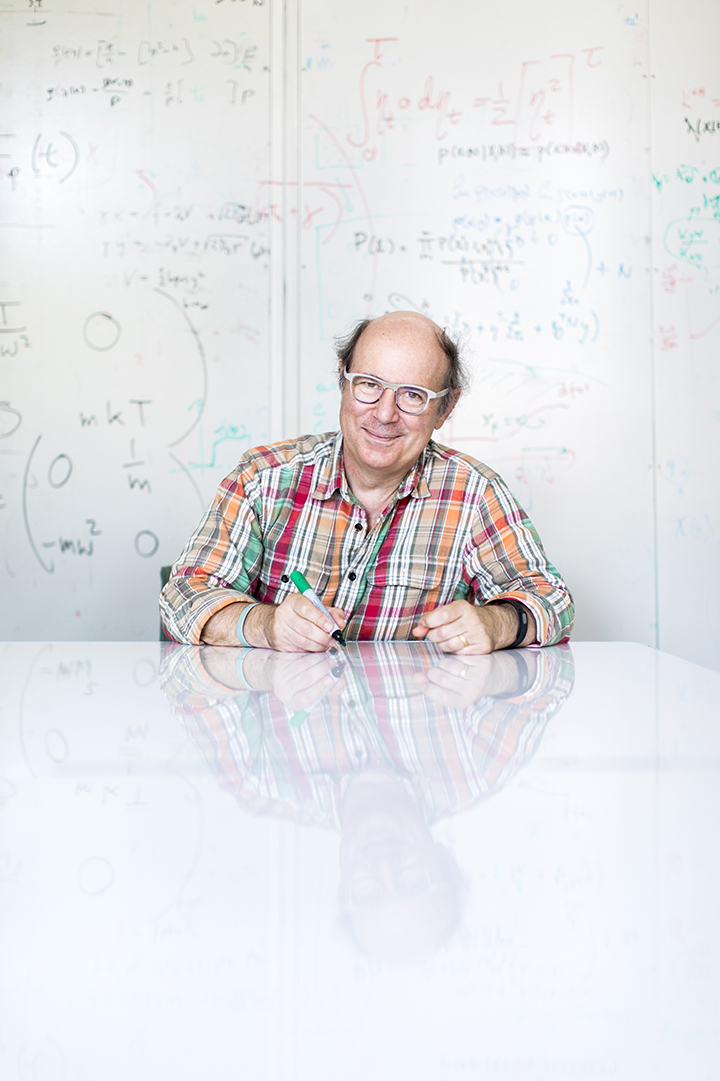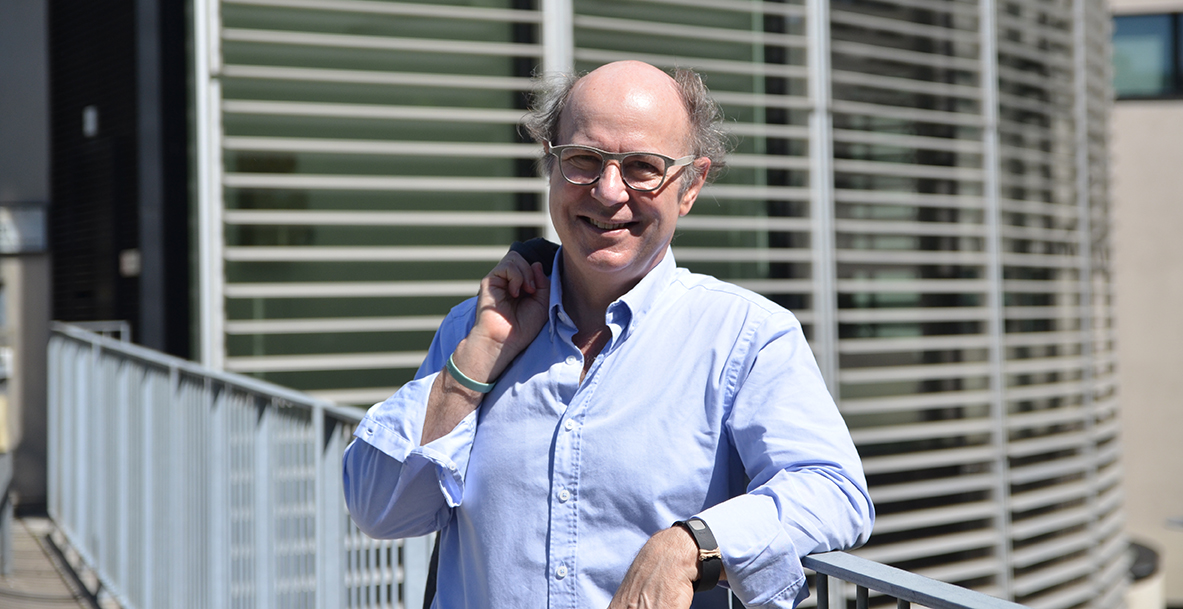The Nobel laureate who got hooked on Stockholm
A childhood interest in math and technology took Frank Wilczek all the way to a Nobel Prize. Now he spends a large portion of his time in Sweden where he is trying to crack the secret of dark matter.
-
 Frank Wilczek at Stockholm University. Photo: Niklas Björling
Frank Wilczek at Stockholm University. Photo: Niklas Björling -
-
Frank Wilczek’s 2004 Nobel Prize in Physics made him one of the most widely recognized researchers in the world, even outside his field. He now spends much of his time as a professor in theoretical physics at Stockholm University and the Nordic Institute for Theoretical Physics. Professor Wilczek combines these responsibilities with an impressive array of other academic roles; he is the Herman Feshbach Professor of Physics at MIT in the U.S., professor in residence at Arizona State University a few months every year, and he also makes time to visit the new physics institute in Hangzhou, China, which bears his name.
-
 Frank Wilczek. Photo: Serena Nobili
Frank Wilczek. Photo: Serena Nobili -
-
A childhood with limited resources
Frank Wilczek’s story starts in 1951 in Queens, New York, where he grew up in a working-class family with roots in Europe. They were children of the Great Depression and had limited access to resources, but that didn’t stop them from educating themselves. Frank’s father was a self-taught engineer and passed his interest in technology and science on to his son.
The time during the late 50s and early 60s was ambivalent for science, with both the destructive power of the atom bomb and the potential for increasingly sophisticated technologies and space exploration capturing people's imagination.
“As children, during the Cold War era, our interest in science and technology was absolutely encouraged, as a national priority.” -
Pioneering work at just 21
Frank Wilczek excelled at the public school he attended and his top grades won him a scholarship to the University of Chicago. His studies included neuroscience and philosophy, but soon mathematics caught his attention and he decided to pursue a master’s degree in math at Princeton. There he changed his sights to physics and started working under David Gross. In just a few months, Wilczek, alongside David Gross, published a ground-breaking article that would earn him some of the world’s most prestigious scientific prizes, eventually even the Nobel Prize. He shared the prize with David Gross and David Politzer. -
A magical experience
Frank Wilczek described Nobel Week as "magical," and very different from what he had imagined. He had an inkling that he might win the prize someday, of course, but was totally surprised when it happened.
“It was an experience that changed my life,” he says. The prize opened many doors for him and he became famous beyond the ivory tower of physics. “I take the Nobel Prize seriously. It’s not only an opportunity, it’s also a responsibility.”
He has taken the opportunity to write several books on science for the general public. Wilczek’s forthcoming book, to be published in January 2021, is titled “Fundamentals – Ten Keys to Reality” (Penguin Press), which explores “what everyone needs to know about how the world works.” He lays down 10 fundamental principles and gives the scientific foundation for them in an effort to explain science while also combatting certain anti-scientific sentiments. -
Hooked on Stockholm
In 2008, Frank and his wife, Betsy Devine, came to Stockholm for a semester devoted to research at the physics institute Nordita. The couple loved Stockholm, and Wilczek started working together with a number of researchers at Nordita and the Department of Physics. When the Swedish Research Council announced a new grant for Swedish universities to recruit top international researchers, Wilczek and Stockholm University jumped on board.
Wilczek likes the environment of the Department of Physics and Stockholm in general. “The Albanova building is extremely attractive, that’s a pleasure to inhabit,” he says. There are several groups of interest to him (e.g., cosmology, condensed matter) which have regular informal meetings, journal clubs, and seminar series. “Nearby is Nordita, where I’ve also got an office. It has lots of high-level scientific activity,” he says.
Wilczek also appreciates that the University is a green space in the city. “Betsy and I love Stockholm! The water, the size, the cosmopolitan feel, the safety, the long sightlines across Saltsjö Bay and the great public spaces. I’ve never seen so many happy families in my life.” The couple lives in Östermalm, within walking distance of his job. “I’ve got to get my 10,000 steps a day! And it’s so near the amusement park Gröna Lund that I’ve been able to go there several times.” -
Video interview with Frank Wilczek during the Nobel Calling Stockholm event: Frank Wilczek on physics, the Nobel Prize, beauty and knowledge
Short interview on: Stockholm's "vibrant scientific environment" -
SOME FACTS ON STOCKHOLM UNIVERSITY
Stockholm University is one of Europe's leading centers for higher education and research in human science and science.
• Ranked among the world’s top 100 universities
• More than 75 programs taught in English in science, social sciences, humanities and law
• The application period for fall 2021 is now open
• Apply before January 15
• Visit www.su.se/study for a full list of programs and see what fits your interests and career goals
Or as text: -
Ranked among the world’s top 100 universities, Stockholm University is one of Europe's leading centers for higher education and research in human science and science. We have more than 75 study programs taught in English within science, social sciences, humanities and law. Visit su.se/study for a full list of programs and see which one fits your interests and career goals! The application period for fall 2021 is now open and the last day to apply is January 15.
-
-
